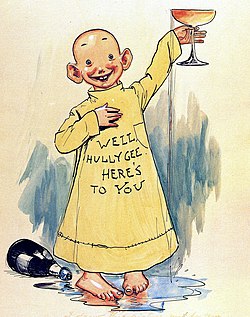EOTO Research- Yellow Journalism

Prior to coming into this class, I had never heard of Yellow Journalism, so I did some research.
Yellow Journalism, to me, seems like an art form. It came about in the 1890s and was not present for much longer than that, reminding me of eras of art in a way. Yellow Journalism was a form of writing that used hyperbole, drama, and exaggeration to increase the sales and circulation of newspapers. Getting routes and gaining popularity from the Spanish American War, many people think the press had a very influential impact on whether the U.S. would have entered the war.
It all started with a friendly feud. Joseph Pulitzer was the owner of a paper called The New York World, taking root in New York publishing papers before his competition, William R. Hearst, decided to make a competing paper: The New York Journal.
Hearst, formerly from California, moved out to New York in search of a more rigorous pursuit. He owned the Examiner in California, that was a huge hit, and wanted to take over a paper in New York to continue his success. There, he met his rival: Pulitzer.
The whole rivalry started because of a cartoon. Yes, a cartoon. Papers written using yellow journalism were known for having cartoons, sketches, illustrations, and pictures. The cartoon that Pulitzer was famous for was called the Yellow Kid. It was a sketch of a yellow kid who represented all of the dirt of New York City- shedding light on things like politics and racism. Later on, it was a way for the writer to put humor in his writings. The point of the comic was to depict a child from 'the wrong side of town' with all of his friends doing mischievous things to shed light on people's views and what was going on in the city.
When Hearst came to New York, he decided he wanted this Yellow Kid because he was what was popular. He hired the same sketch artist Pulitzer used to make this kid, and he made a new rendition for Hearst, and started a print war.
Of course, Pulitzer retaliated, like all good men would do, and created a new cartoon. Thus, the term Yellow Journalism was born.
During the same time, there was feuding in Spain. Hearst caught wind that the vessel, Maine, had sunk. All Hearst was concerned about was making 'national prominence' for himself, and he knew the war with Spain was the way to do it. So, he sent his reporters to Cuba and had them embellish some print stories on the conditions there to tug at the poor American's heart strings. When the ship sank, he published an article blaming Spain for the occurrence, with no evidence of course.
Yet, since people so easily believe anything they hear, Americans rallied behind Hearst. Pro-war voices were booming in the press, and the Americans decided they were ready to fight this war.
In the end, the only truly good things that came from Yellow Journalism was the U.S. recognizing they are now a world power, and American citizens recognizing that the press had power. In a smaller scale, Yellow Journalism gave way to some techniques used in television and broadcast today- like catchy headlines and lots of detail; however, once we decided to go to war with Spain, Yellow Journalism as we knew it died down and was not so prevalent anymore.
https://en.wikipedia.org/wiki/The_Yellow_Kid
Comments
Post a Comment